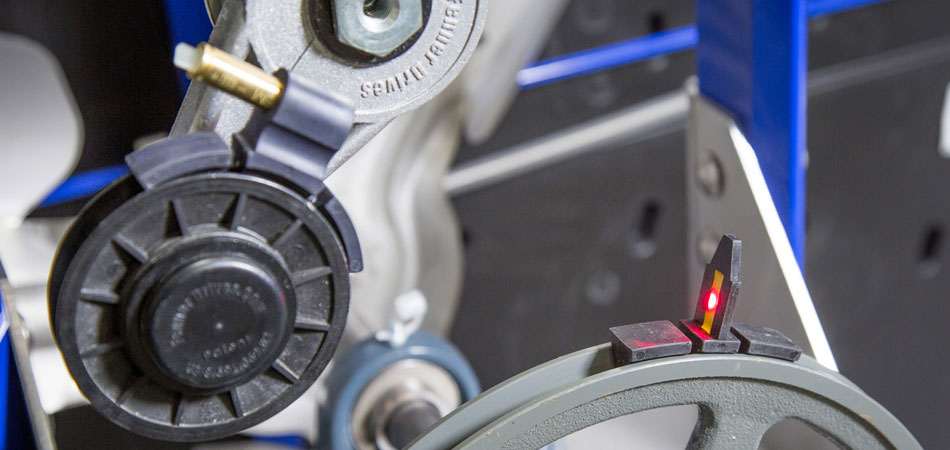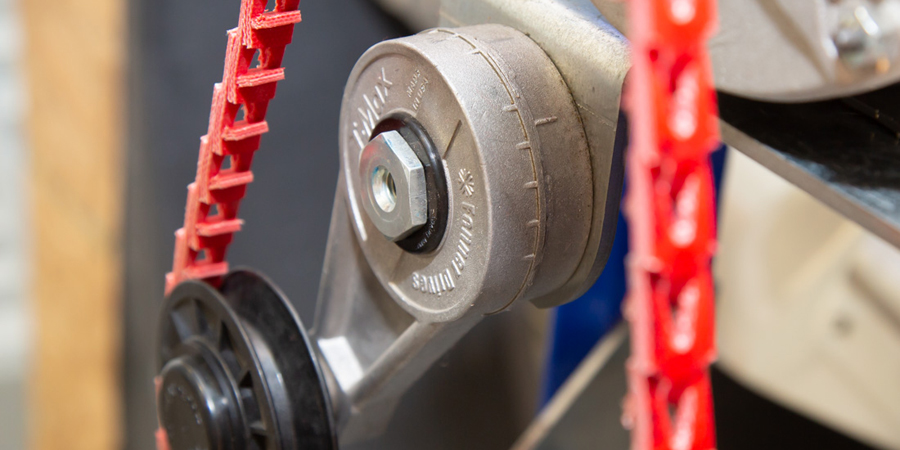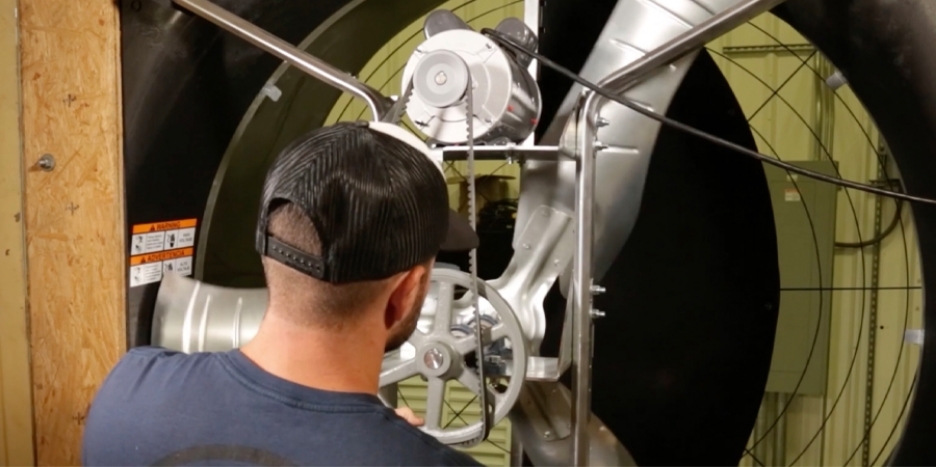Performing preseason maintenance on summer fans will ensure they operate to their full capacity during hot weather ahead. Here’s a basic preseason tune-up checklist.
1) Fan belts
Replace them every year. It's common to see fan delivery diminished by as much as 20% because of worn belts. Fan belts don't stretch; they wear from constant contact against the pulleys. They ride lower in the pulley grooves as they get thinner, causing the fan blades to rotate slower.
 |
| Check for cracks along the neck portion of the individual links and note direction arrows when replacing. |
If your fans use a link-style belt, check for cracks on the neck portion of the individual links. The neck is the part of the link subject to the highest amount of stress as it rotates around the pulleys. Replace the entire belt, not just the damaged link. Since every link is subject to the same amount of flexing, the rest will probably continue to fail in short order. Also note the direction arrows on the belt, making sure the belt is replaced on the pulleys with the arrows pointing counterclockwise. For detailed instructions on installing a link-style belt, click LINK BELT and watch the instructional videos at the bottom of the page.
2) Check the pulleys
While you have the belts off, visually examine the pulley grooves for wear. The grooves should have a sharp V shape. Replace pulleys with rounded grooves. The Laser Fan Pulley Alignment Kit is an excellent tool for aligning new pulleys with the existing drive assembly. Easy to use, place the laser pointer in the pulley groove and adjust the target piece in the new pulley until it lines up. The target piece also functions as a pulley groove gauge to check existing pulleys for wear.
 |
| Laser Alignment Kit aids in aligning new pulleys. |
3) Keep the pulley size the same.
Some growers try to boost fan output by switching to a larger pulley that increases the propeller speed. At best, this is a short-term solution. Operating a fan at a higher speed for an extended period increases the amp draw on the motor, causing it to overheat. Overheating is the leading cause of motor failure. Click to read more about the hazards of boosting fan performance by increasing pulley size.
 |
| The indicator bar on the auto tensioner registers correct belt tension. |
4) Check the auto tensioner
If your fans have an auto tensioner, flex it several times to make the internal spring has not seized. You should also check for proper tension by checking the position of the indicator marks on the body. The indicator bar should register between the first and second marks on the tensioner body with the belt on. To increase the amount of tension, rotate the body nut counterclockwise.
5) Clean the shutters
Dirty fan shutters can reduce fan output by 8%. Use a broom or brush to clean instead of a power washer. Leave the broom where it is handy to keep the shutters clean throughout the season. Replace any bent or damaged vanes or rods that might prevent the vanes from closing.
6) Fan cones
1) Cones add 10% to fan performance; missing parts nullify their effectiveness. Replace any missing parts damaged by snow, wind, or ice.
Ventilation fans are no different than any other piece of equipment on the farm...they perform better with annual maintenance. Doing that maintenance now means you will not have to do it in the summer heat.












 Україна
Україна Méjico
Méjico



